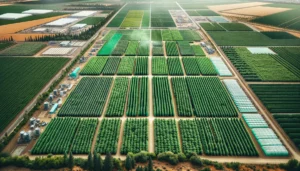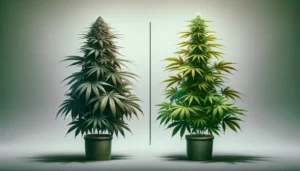Your Step-by-Step Guide to Growing Cannabis at Home
 For many cannabis enthusiasts and home gardeners, no experience is quite as rewarding as watching a tiny seed grow into a lush, aromatic plant ready for harvest. Yet, the art of growing cannabis at home is not without its intricacies. From navigating legal frameworks to cultivating the ideal growing environment, there is much to consider before you plant your first seed. Whether you’re a seasoned green thumb or a curious novice, learning how to grow cannabis at home can transform your appreciation for this versatile plant and provide a deeply satisfying journey from seed to harvest.
For many cannabis enthusiasts and home gardeners, no experience is quite as rewarding as watching a tiny seed grow into a lush, aromatic plant ready for harvest. Yet, the art of growing cannabis at home is not without its intricacies. From navigating legal frameworks to cultivating the ideal growing environment, there is much to consider before you plant your first seed. Whether you’re a seasoned green thumb or a curious novice, learning how to grow cannabis at home can transform your appreciation for this versatile plant and provide a deeply satisfying journey from seed to harvest.
Understanding the Legal Landscape
Before you don your gardening gloves, it is paramount to understand the legalities around cannabis cultivation in your area. Laws vary widely, and in some jurisdictions, home cultivation is still strictly forbidden.
If you find that growing at home is indeed permitted, take the time to familiarize yourself with specific regulations. For example, some areas impose plant count limits, while others may stipulate that plants must be kept out of public view. Adhering to these rules protects not only your freedom but also the burgeoning reputation of the cannabis community.
Choosing the Ideal Cultivation Space
Selecting the right location to grow your cannabis can make or break your harvest. Whether you’re looking at a spare room, a closet, a dedicated grow tent, or your own backyard, there are a few key considerations to keep in mind.
Lighting: Cannabis is a light-hungry plant, so be sure to place your grow space where access to ample sunlight is available. If growing indoors, high-quality LED or other specialized grow lights are essential.
Ventilation: Fresh air is crucial to plant health. An airflow system that brings in fresh air and removes heat and humidity will help prevent mold and maximize growth.
Security and Discretion: Especially if you have young ones at home, your grow area should be secure and, if indoors, discreet. This means considering options like locks and light-blocking measures.
Selecting the Perfect Strain
There are countless cannabis strains out there, each with unique growth characteristics, terpene profiles, and cannabinoid contents. It’s important to select a strain that not only suits your personal preferences but also thrives in your chosen growing environment.
Indica, Sativa, or Hybrid: Consider the desired effects of your strain as well as your available space. Indicas tend to be shorter and bushier, making them great for indoor grows, while sativas are typically taller and better suited for outdoor cultivation.
Autoflowering or Photoperiod: Autoflowering strains don’t rely on light cycles to progress through their life stages, making them a bit easier for beginners. Photoperiod strains, on the other hand, require specific light cycles at different points in their growth.
Seed Germination
Your cannabis cultivation journey begins with germination, the process of coaxing your seeds out of dormancy and into sprouting.
Paper Towel Method: Place your seeds between two damp paper towels and wait for them to sprout tiny white roots, usually within a few days.
Direct Soil: Plant seeds directly in a small pot of pre-moistened, high-quality soil. Cover very lightly with soil and water gently.
Jiffy Pellets or Seed Starter Plugs: For an alternative method, plant seeds in pre-soaked pellets or plugs designed for germination.
Preparing the Soil and Containers
Cannabis is a hungry plant, and the medium in which it grows plays a big part in what it consumes.
Choosing Soil: Avoid cheap, low-quality soils. Look for a bag labeled for cannabis and ensure it has the right pH levels and nutrient contents.
Container Size: The size and material of your containers affect root development. Start with smaller pots for seedlings and plan to transplant into larger pots as the plant grows.
Drainage: Whatever container you choose, ensure it has ample drainage to avoid waterlogged roots.
Lighting: The Sunlight’s Substitute
 Indoor growers must replicate the sun’s power with artificial light sources. Different stages of growth require different lighting schedules.
Indoor growers must replicate the sun’s power with artificial light sources. Different stages of growth require different lighting schedules.
Seedling Stage: A less intense light source is needed during the seedling stage to prevent burning young plants.
Vegetative Stage: Provide your plants with at least 18 hours of light every day to encourage strong, healthy growth.
Flowering Stage: When you’re ready to initiate flowering (which usually entails a change in light cycle), be sure to provide complete darkness for the full length of the “night” period, without any light leaks disrupting the schedule.
Watering Wisely and Providing Nutrients
Like all plants, cannabis requires water and nutrients to grow. However, overwatering is a common issue for first-time growers, so it’s crucial to strike the right balance.
When to Water: Stick your finger into the soil about an inch down. If it feels dry, it’s time to water. If it still feels moist, wait another day or two.
Which Nutrients: Cannabis plants need a mix of nitrogen, phosphorus, and potassium, as well as micronutrients like magnesium and calcium. Many growers opt for premixed nutrient solutions that can be added to the water.
Nutrient Burn: Be cautious not to overfeed your plants, as this can lead to nutrient burn, which shows as the tips of the leaves turning brown.
Climate Control
Proper temperature and humidity levels are critical for cannabis health and can impact plant growth, fungus and mold in your growing environment.
Temperature: During lights-on periods, aim for temperatures between 70-85°F. At night, slightly cooler temperatures around 5-10 degrees lower are recommended, mimicking natural environmental changes.
Humidity: Maintain humidity levels around 60% during the vegetative stage and around 40-50% during the flowering stage to prevent mold.
Air Circulation: Stagnant air can harm your plants, so use fans to keep the air moving. This helps prevent hot or cold spots as well.
Monitoring Plant Health and Development
Regularly inspect your plants for signs of trouble. Are the leaves discolored? Is there unexplained drooping or wilting? These can be signs of pests, disease, or nutrient deficiencies.
Training Your Plants: Techniques like topping, LST (low-stress training), and SCROG (screen of green) can help maximize yields by controlling plant shape and size.
Harvesting: When the buds are mature, they’ll be sticky and aromatic. Use a jeweler’s loupe or a magnifying glass to monitor the trichomes for the right time to harvest.
Drying and Curing
 Once harvested, the buds need to dry and cure properly to achieve the best flavor and aroma profiles.
Once harvested, the buds need to dry and cure properly to achieve the best flavor and aroma profiles.
Drying: Hang the plant upside down in a cool (60-70°F), dark, and well-ventilated space for about a week.
Curing: Once the small stems snap instead of bending, the buds are ready to be placed in glass jars to cure. Open the jars for a few minutes each day for the first week, then less frequently as the cure continues over several weeks.
By paying attention to these various stages and providing the best care you can, you’ll be rewarded with the fruits (or rather, buds) of your labor. Whether for medicinal or recreational purposes—or simply out of a love for the plant—the satisfaction of growing your own cannabis is a truly unique experience. Remember, each harvest is an opportunity for learning and improvement, so don’t be discouraged if things don’t go perfectly the first time. Happy growing!


